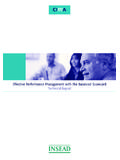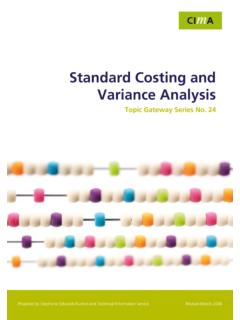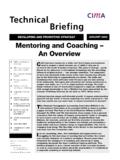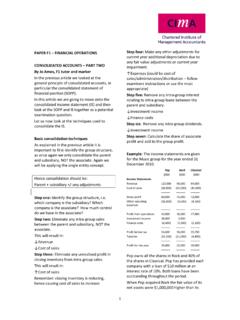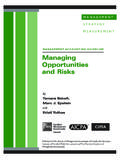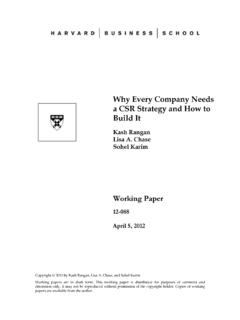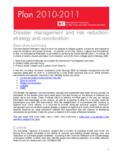Transcription of Performance Reporting to Boards: A Guide to Good Practice
1 Performance Reporting to Boards: A Guide to Good Practice31 Preface42 Who should read this report43 Introduction54 The principles of financial and business reporting65 The characteristics of good information66 Transparency97 Key Performance indicators118 Information systems119 The CIMA SEM initiative1210 Applying the principles1211 Performance Reporting a checklist1312 Case study 1: extracting value from data supporting14the board at DHL UK13 Case study 2: Metapraxis an early-warning support17system for directors at Tomkins plcReferences/further reading19 Writer: Danka Starovic Production editor: Neil ColeDesigner: Adrian TaylorPublisher: the Chartered Institute of Management AccountantsInquiries: (tel: 020 8849 2275)Other executive guides are available at post-Enron discussions aboutcorporate governance have focusedalmost exclusively on theresponsibilities of directors and thestructure of boards.
2 This is hardlysurprising after all, a company ssurvival ultimately depends on theeffectiveness of its board sdecision-making processes. But boardsdon t exist in a vacuum. In order tomake the right decisions, directors mustbase them on good-quality, timelyinformation on how their businessesare performing. The quality ofperformance Reporting to boards istherefore one of the key factorsaffecting companies competitiveness. This report sets out principles for theeffective Reporting of financial andnon-financial information to s meant to Guide both directors andthose preparing board reports. We hopethat finance professionals will find ituseful in considering how they engageexecutives and senior s not meant to be prescriptive;the intention is that the summary tablesof good Practice and the case studieswill act as a springboard for newthinking and give you useful ideas formaking improvements in yourorganisation.
3 Ultimately, board structuresand decision-making cultures will dependon a company s unique companies may also operatedifferent levels of boards throughouttheir businesses. The complexity of largeinternational organisations with manysubsidiaries makes the issue ofmanagement information anddecision-making more complex, and theneed for directors of such vastorganisations to have early-warningsystems is a Guide isn t about the latestmanagement techniques and reportingtechnologies either. Although manysuch tools exist (and some are provinguseful), recent cases of corporate failurehave underlined the importance ofperformance Reporting an area thatmany firms assume is simple but findhard to get right. The case of Marconi,for example, raised questions abouthow timely the board s information was,whether it was of good enough qualityto support high-level decision-makingand whether it was conveyed in theright is concerned with the boardreporting Practice that s necessary forgood market Performance and soundcorporate governance.
4 The case studiesat the end broaden this perspective byrevealing two innovative approaches toimproving Performance first case study describes howlogistics company DHL changed thefocus and structure of its performancereviews with a view to improvingdecision-making at board level. Theresult was the appointment of a teamof business Performance analystsdedicated to supporting the second case study, frommanagement consultancy Metapraxis,focuses on the implementation of anearly-warning support system fordirectors at Tomkins plc. The approachwas designed to help the group s financeteams support their boards with relevantand forward-looking information. This report will be particularlyuseful for: board members to reassess thereports they receive to ensure thatthey are being given the right type ofinformation by which to steer theorganisation towards its key a business environment dominatedby fear of liability, knowing that yourdecisions are based on the mostrelevant facts can be reassuring.
5 Forindividual directors it represents a wayof limiting their exposure to anyallegations that they are failing todischarge their duties to onus is on them to ensure thatthey are getting the information theyneed, rather than passively consumingwhat they are fed. Finance directors and preparers offinancial and business performanceinformation to gain a source of ideason Reporting . The information withintheir control will be financial andnon-financial, and both need to bepresented clearly if they are to reflectthe Performance of a professionals must understandhow to deliver performanceinformation in the context of decisionsthat need to be made by the is especially true for largeinternational organisations with manysubsidiaries, where the layers ofmanagement and the number ofboards may obscure the relevantfigures and breed a lack of commonunderstanding of what the keyperformance drivers are.
6 Managers to gain an understandingof the information needs of theboard and to see the performancereport as a strategic extension ofday-to-day information and decisionsupport that board members receiveenables them to discharge theirduties in an appropriate fashion. It canalso be a good indication of therelationship that exists between theboard and the management. Performance Reporting to Boards1 Preface42 Who shouldread this report5 Performance Reporting to BoardsThe board of directors in anyorganisation is responsible for itsoperational, strategic and financialperformance, as well as its conduct. Boards exercise their responsibilities byclearly setting out the policy guidelineswithin which they expect themanagement to operate. They will setout the short- and long-term objectivesof the organisation and a system forensuring that the management acts inaccordance with these will also put procedures in placefor measuring progress towardscorporate objectives.
7 There is therefore a clear differencebetween the main responsibilities ofdirectors and managers. In his recentbook, Corporate Governance andChairmanship: A Personal View, SirAdrian Cadbury distinguishes betweendirection and management: It is the jobof the board to set the ends that is tosay, to define what the company is inbusiness for and it is the job of theexecutive to decide the means by whichthose ends are best achieved. They mustdo so, however, within rules of conductand limits of risk that have been set bythe board . The board is ultimatelyaccountable for both the company s3 Introductionpurpose and for the means of achievingit. The task, however, for which theboard alone is responsible is thedetermination of corporate ends. Provision of the CombinedCode states that the board should have aformal schedule of matters specificallyreserved to it for decision-making andthat the annual report should include astatement of how the board operates,including a high-level statement of whichtypes of decisions are to be taken by theboard and which are to be delegated tomanagement.
8 It is generally acceptedthat the former should cover: business strategy , includingoperating, financing, dividend andrisk management policy; the annual operating plan and budget; acquisitions and disposals that arematerial to the business; authority levels; the broad framework and cost ofdirectors remuneration (on the adviceof the remuneration committee); the appointment and removal of thecompany secretary; approval of financial statements. (TheCorporate Governance Handbook, GeePublishing, 1996).Having sound information on whichto act is key to this process. Any attemptto formulate business strategy or settactical plans without it is bound tomisfire the board runs the risk offailing to discharge its responsibilitieseffectively. This will ultimately result inpoor decision-making and, at worst,increased liability for directors.
9 It is worth remembering that boardsrequire both financial and non-financialinformation. The pressure formulti-dimensional Reporting is likely toincrease with the proposed legislativechanges such as the mandatoryoperating and financial review (OFR). Thisrequires directors to give a qualitative, aswell as financial, evaluation ofperformance on a wider range of issues,including policies and Performance onenvironmental, community, social, ethicaland reputational matters. Although thedetailed content of the OFR itself will notbe audited, the process of preparing itand its consistency with the financialfigures will be. The OFR means that thedisclosure of non-financial informationwill no longer be an optional extra forlarge public organisations and very largeprivate companies. The scope of information flowingthrough the company to the board ,and then from the board to theinvestors, will have to be need to ensure that theyhave systems in place that cangenerate and collect such data, as wellas processes and people capable ofanalysing and presenting it to theboard, and then to the markets, in ameaningful form.
10 The board should: Set aims, policy constraints andguidelines, objectives and broadstrategy, and then confirm these tothe executive management team. Agree defined Performance indicators. Ensure that it is receiving all the keyinformation to enable it to probeand question; focus on critical successareas and key performanceindicators; and identify appropriatemanagement actions where there arepositive or negative variances fromprojected Performance . Periodically review the information itreceives to ensure that it is gettingwhat it needs and that all boardmembers fully understand it. Theboard should guard against beinginundated with an unnecessaryamount of data that provides little orno information and which mayprevent it from taking action. Ensure that the Performance reportingprocess links objectives, principles andpractices to its needs.



